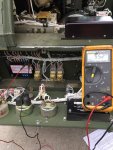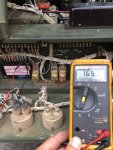nosliwwt
New member
- 5
- 0
- 1
- Location
- Wasilla, AK
Dewie38, 3800 RPM, does that run around 315 Hz?
Kloppk, went through your suggestion, ~202 Hz on A-B
27VDC on G-F
0-.33VDC D-E.
After awhile it intermittently stops responding to shutoff cues, IE E-Stop button and the start-run-stop switch. Wiring test are good.
I switched the governor actuator with one from a good genset and same response. If I flip the switch to stop and then back to run, the actuator sets the engine to 300+Hz and will then respond to shutdown cues. Also, I can then load test the set with minimal issues, a couple times it shut down for "low fuel pressure" (the filter was changed after the first occurrence).
Kloppk, went through your suggestion, ~202 Hz on A-B
27VDC on G-F
0-.33VDC D-E.
After awhile it intermittently stops responding to shutoff cues, IE E-Stop button and the start-run-stop switch. Wiring test are good.
I switched the governor actuator with one from a good genset and same response. If I flip the switch to stop and then back to run, the actuator sets the engine to 300+Hz and will then respond to shutdown cues. Also, I can then load test the set with minimal issues, a couple times it shut down for "low fuel pressure" (the filter was changed after the first occurrence).




